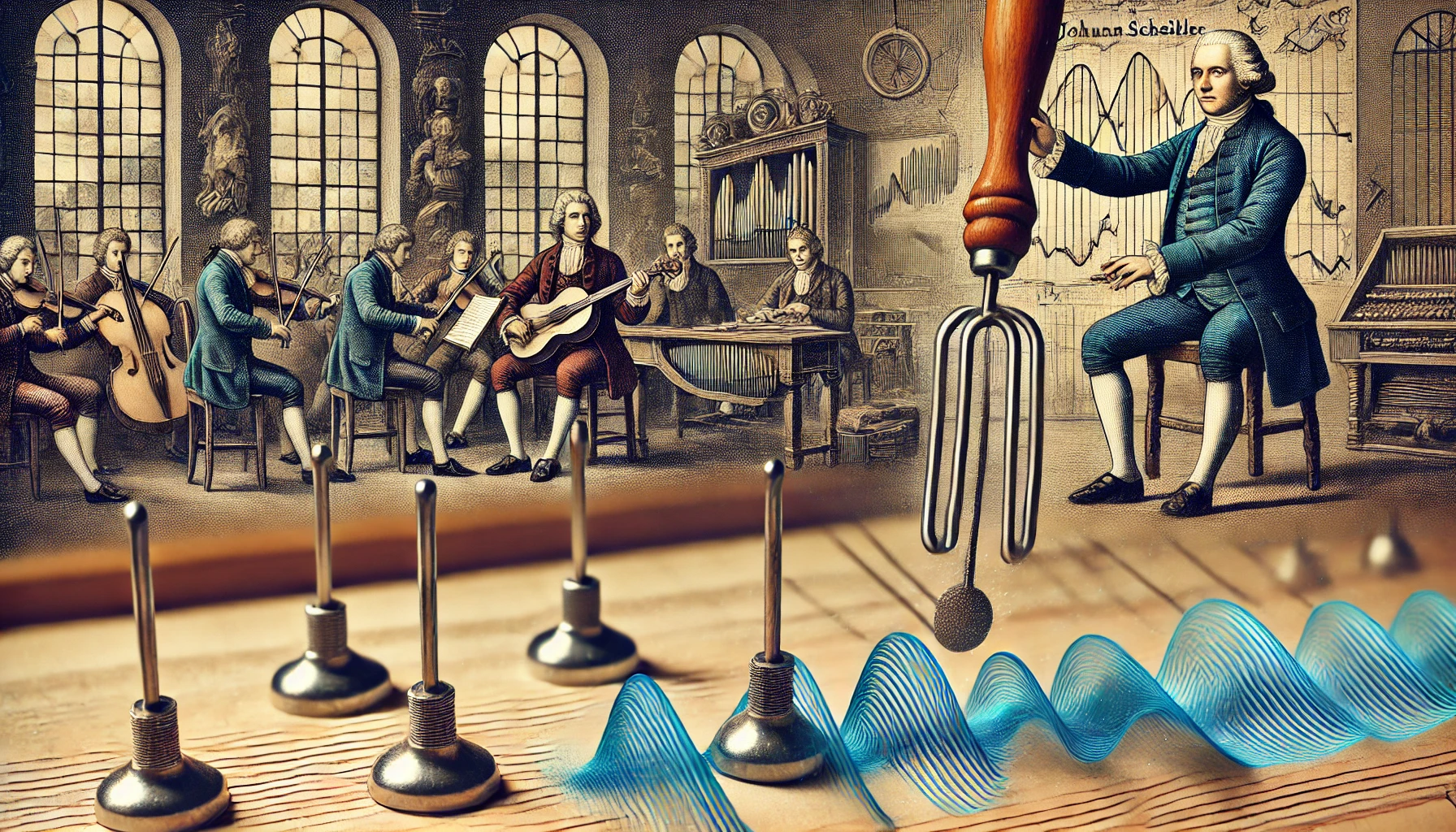This lesson explains Johann Scheibler’s contributions to acoustics through the invention of the tuning fork and the process of frequency measurement, covering the history of the tuning fork and its acoustical principles.
A tuning fork is made by bending a square bar of metal of a certain thickness into a U-shape and welding a steel pole securely to the bottom. The device is characterized by the fact that when struck with a small hammer, it produces a sound of a certain frequency. In general, the smaller the tuning fork, the higher the pitch. These tuning forks are widely used not only in music, but also in scientific experiments, and have become an important tool for studying the physical properties of sound.
The original tuning fork was developed by English trumpeter John Shore in 1711 as a tool to produce a reference sound when tuning an instrument. At the time, instrument tuning was highly dependent on the player’s ear, which was inaccurate. The invention of the tuning fork greatly improved the accuracy of instrumental tuning, but in the early days, it was only known that the tuning fork produced a specific note on a keyboard instrument, not how many times it vibrated per second. Instruments tuned with these tuning forks had slightly different reference tones from region to region and player to player. This was due to the lack of accurate measuring devices at the time.
Determining the frequency of a tuning fork was a very difficult problem. This problem was solved in 1834 by the German acoustician Johann Scheibler. His method was to count the number of McNolls produced by two tuning forks with different vibrations. A McNall is a phenomenon in which two sounds of slightly different frequencies interfere with each other, causing the sound to periodically get stronger and weaker. When two notes of different frequencies are struck together, the number of McNolls produced is equal to the difference between the frequencies of the two notes. McNall’s frequency is best heard and measured by the ear when it is around 4 times per second, or 4 hertz (Hz).
This is one of the interference phenomena of sound, and it plays an important role in music and physics. For example, it occurs when two notes have approximately the same frequency, causing the sound to periodically rise and fall. This happens because the two notes have almost the same frequency, and it’s one of the most important concepts in acoustics.

Schaubler’s experiment required several tuning forks: he adjusted the pulsation between tuning fork No. 1, which was made to sound like the note A on a certain key, and tuning fork No. 2, which was slightly larger, so that the frequency of the pulsation was 4 Hz. This means that tuning fork #1 has a natural frequency 4 Hz higher than tuning fork #2. Next, Shaybler created a larger tuning fork #3 so that when it rang with tuning fork #2, it also pulsed 4 times per second. This gave tuning fork #3 a frequency 8 Hz lower than tuning fork #1. Shaybler repeated this process, building new tuning forks until he had a tuning fork that sounded exactly one octave lower than tuning fork #1. Eventually, tuning fork #56 sounded exactly one octave lower than tuning fork #1. The shavers were able to calculate that tuning fork #56 vibrated 4 Hz × 55, or 220 Hz lower than tuning fork #1.
Since it was already known that the higher frequency of two tuning forks that are an octave apart has twice the frequency of the lower one, it was easy for the Shabler to calculate the natural frequency of the tuning fork. Since the natural frequency of tuning fork #1 is twice that of tuning fork #56, and the difference between them is 220 Hz, he found that the natural frequency of tuning fork #1 is 440 Hz and the natural frequency of tuning fork #56 is 220 Hz.
Based on these results, Schaibler proposed at a meeting of scientists in Stuttgart, Germany, in 1834 that the A note of a keyboard instrument should be set at 440 Hz. The resulting “Stuttgart Pitch” has since been widely used as a tuning reference in many European countries. This standardized the tuning of instruments across Europe, which contributed to greater consistency in music performance and education. Today, 440 Hz is still used as the standard tuning, which shows the importance of Schaibler’s work.
